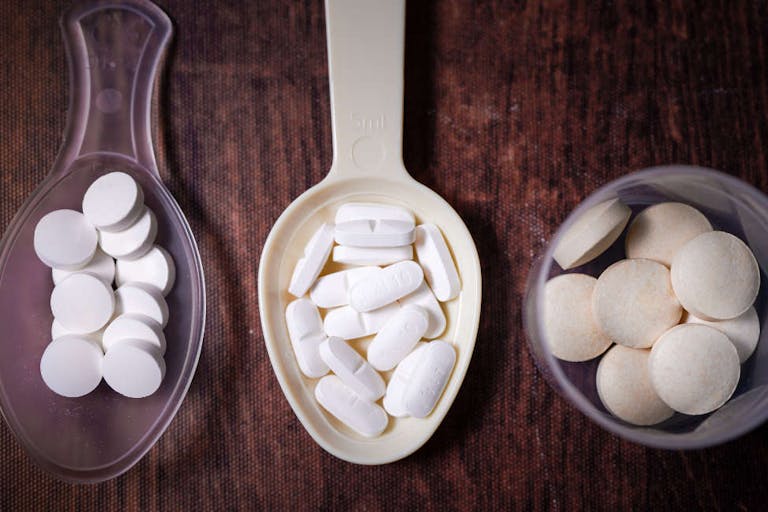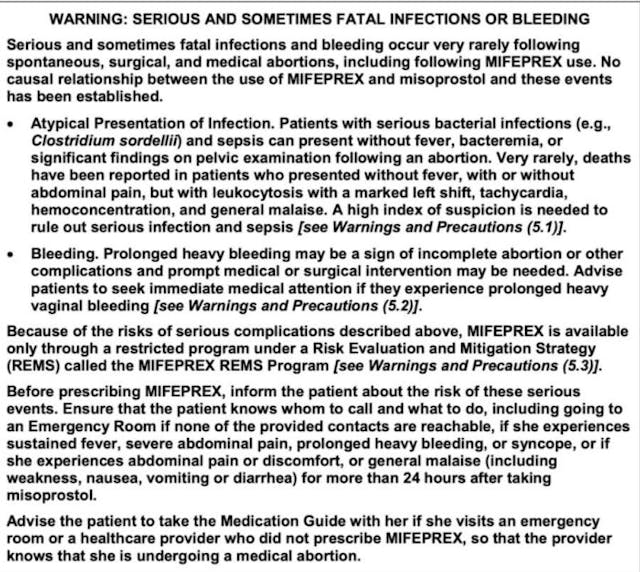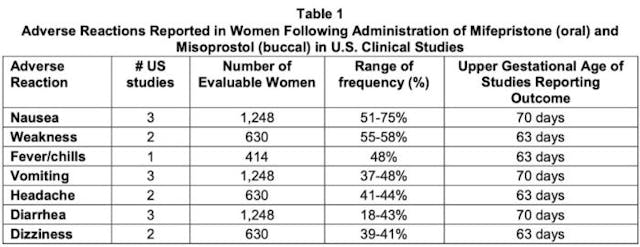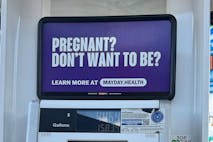
Court grants baby Chance's father sole custody
Nancy Flanders
·
Abortion Pill·By Bettina di Fiore
FACT CHECK: Is the abortion pill actually ‘safer than Tylenol and Viagra’?
“The abortion pill is safer than Tylenol.” This claim has been repeatedly touted by the media and abortion advocacy websites. A recent press release by Unbendable Media similarly claimed: “Studies show mifepristone [the first drug in the abortion pill regimen] is safer and sends fewer people to the ER than Tylenol [generically known as acetaminophen] and Viagra.”
But abortion advocates have failed to prove either claim.
The press release cites a Bloomberg article to support its claim of mifepristone’s superior safety. The article, in turn, cites Viagra’s labeling info, as well as a 1999 study analyzing acetaminophen-related visits to two Virginia hospitals over a 46-month period. Neither of the two sources actually provide relevant evidence.
LAZINESS WITH LABELS
Bloomberg cites the Viagra label to prop up its claim that mifepristone (the abortion pill) sends fewer people to the hospital than Viagra. But the Viagra label contains no statistics on emergency room (ER) visits or hospital admissions. All it contains is a list of contraindications, potential side effects… and coupon program information. It’s a red herring – it has absolutely nothing to do with Bloomberg’s claim.
Granted, Viagra’s list of possible side effects does contain serious conditions, like vision loss, and some may consequently find the label scary. But the label for Mifeprex (the brand name for mifepristone) makes the label for Viagra seem positively pleasant by comparison. First off, there’s this doozy of a warning near the top:

But mifepristone is just the first of two drugs in the abortion pill regimen; it is a progesterone blocker which starves the preborn child of nutrients. The second drug, misoprostol, is typically administered 24-48 hours later, and causes contractions to expel the preborn child from the uterus.
There’s also the table of adverse reactions from the drug’s clinical trials, which is essentially a list of potential side effects:

If Bloomberg and Unbendable Media think the three listed potential side effects of Viagra prove it to be “more dangerous” than the abortion pill – which includes death as a potential “side effect” – then they are operating entirely outside of reason and reality.
STATISTICAL SHELL GAMES
Next, let’s look at the acetaminophen (Tylenol) study. Bloomberg cites it, again, to claim the drug sends more people to the hospital than the abortion pill. To that end, they highlight this quote: “The observed incidence of hospitalization for acute acetaminophen toxicity was 4.8/100,000/yr (95% CI = 3.0 to 6.5). The observed incidence of hospitalization for all acetaminophen poisoning was 5.5/100,000/yr (95% CI = 4.1 to 7.0).”
So what do those numbers mean?
Article continues below
Dear Reader,
In 2026, Live Action is heading straight where the battle is fiercest: college campuses.
We have a bold initiative to establish 100 Live Action campus chapters within the next year, and your partnership will make it a success!
Your support today will help train and equip young leaders, bring Live Action’s educational content into academic environments, host on-campus events and debates, and empower students to challenge the pro-abortion status quo with truth and compassion.
Invest in pro-life grassroots outreach and cultural formation with your DOUBLED year-end gift!
The study itself does not claim to represent anything more than “the observed incidence of acute acetaminophen ingestion in this region,” i.e., four counties in Virginia over the specific period of time during which the study took place, which was nearly a quarter of a century ago. This is hardly extrapolatable to the entire, current, U.S. population.
Furthermore, a true apples-to-apples comparison of hospital visit frequency related to ingestion of these drugs must account for the frequency with which people take them in the first place. Acetaminophen is taken by people of virtually all ages and both sexes for a mind-boggling array of reasons. It is taken millions of times annually by prescription, and its over-the-counter sales reach into the billions of dollars. Many times more people are using this drug every day than are using mifepristone; it is therefore disingenuous to make a safety claim based solely on a comparison of raw hospital visit numbers for both drugs.
It’s entirely possible that more people go to the hospital after taking Tylenol – because more people take it in the first place. Similarly, more people go to the hospital after car accidents than after skydiving – that doesn’t necessarily mean skydiving is safer, it just means more people are driving than jumping out of planes.
A valid comparison of hospital visit frequency must account for the frequency with which both drugs are taken. Fortunately, this data is available. This 2016 study sought to analyze trends in acetaminophen-related adverse events, and tracked the rate of annual ER visits relative to annual sales of the drug. It found that, for the year 2012 (the most recent year covered by the study), there were 282.1 acetaminophen-related ER visits for every 1 (one) million units sold. Assuming typical dosage to be equivalent to two tablets, this means that .056% of doses sold resulted in a hospital visit (282.1/500,000 = .00056).
But even this number is inflated compared to mifepristone’s hospital visit rate, because it includes children and people who intentionally overdosed, populations which are irrelevant to mifepristone’s calculations.
And what is mifepristone’s hospital visit rate?
A recent study conducted by the abortion industry itself found an ER and urgent care visit rate of 6%. That’s 107 times greater than the rate for acetaminophen/Tylenol, which again, is actually a low number if we were to compare equivalent populations.

THE ELEPHANT IN THE CORNER
But this doesn’t even address the most obvious absurdities inherent in the claim that the abortion pill is safer than Tylenol. A recent study found that 40% of women taking the abortion pill experienced “severe pain” – pain they experienced as a direct consequence of taking the drug, which they would not have experienced otherwise. The abortion pill causes pain; Tylenol treats it.
Furthermore, mifepristone is meant to result in death to a growing human being, otherwise it has been deemed to fail. One cannot call a drug “safe” when its intended purpose is to kill. To do so defies reason.
In reality, mifepristone cannot be validly compared side-by-side with any legitimate medication – because it isn’t medicine. Medicine’s purpose is to treat disease; pregnancy is not a disease, and the abortion pill’s sole purpose is homicide.
Live Action News is pro-life news and commentary from a pro-life perspective.
Contact editor@liveaction.org for questions, corrections, or if you are seeking permission to reprint any Live Action News content.
Guest Articles: To submit a guest article to Live Action News, email editor@liveaction.org with an attached Word document of 800-1000 words. Please also attach any photos relevant to your submission if applicable. If your submission is accepted for publication, you will be notified within three weeks. Guest articles are not compensated (see our Open License Agreement). Thank you for your interest in Live Action News!

Nancy Flanders
·
Abortion Pill
Carole Novielli
·
Abortion Pill
Carole Novielli
·
Abortion Pill
Carole Novielli
·
Abortion Pill
Bridget Sielicki
·
Abortion Pill
Carole Novielli
·
International
Bettina di Fiore
·
Human Rights
Bettina di Fiore
·
Politics
Bettina di Fiore
·
Human Interest
Bettina di Fiore
·
Activism
Bettina di Fiore
·